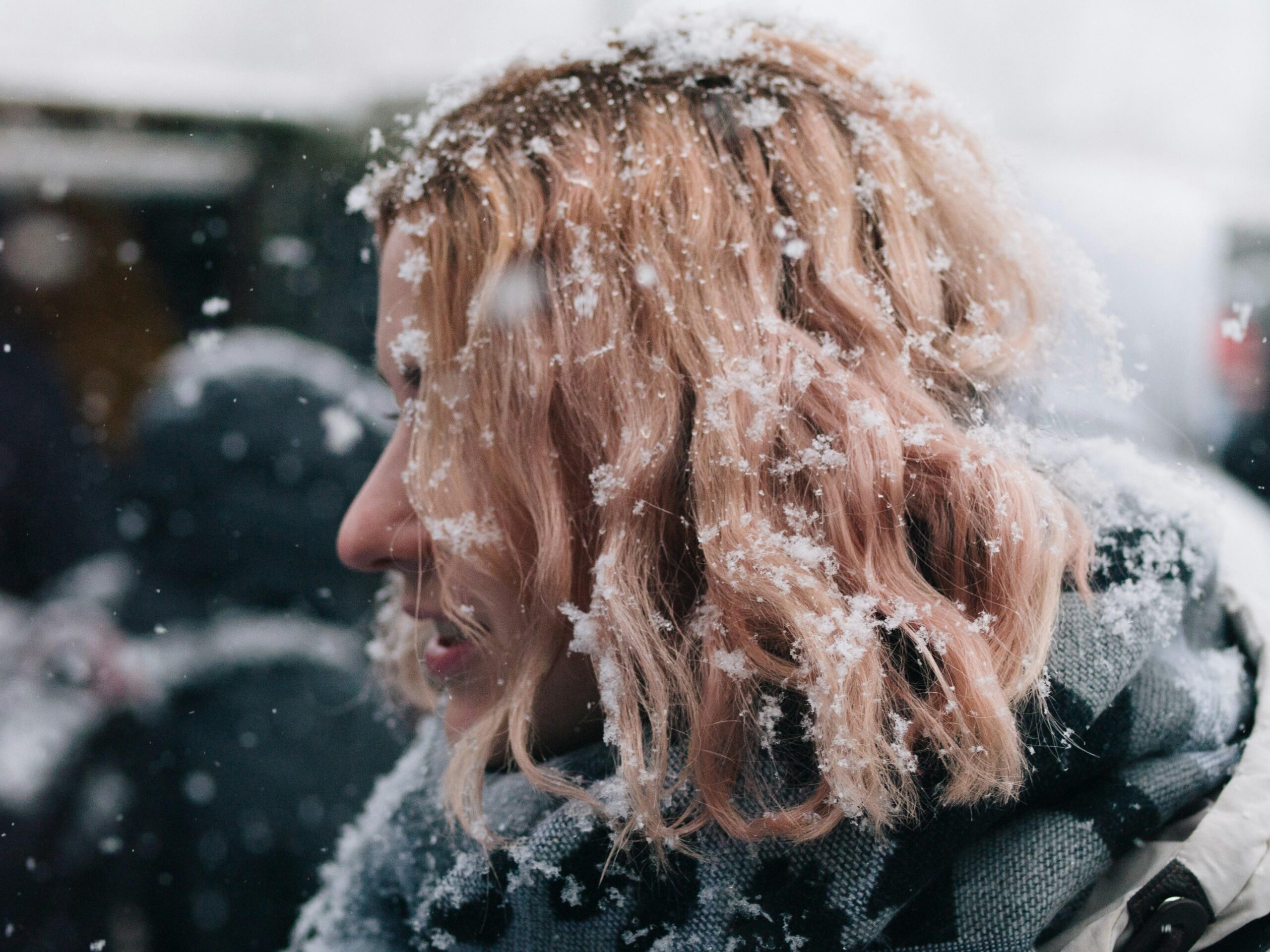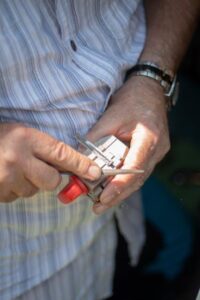As the vibrant hues of autumn fade and the first flakes of snow begin to drift down over the Twin Cities, Minnesota’s winter ushers in a season of stark beauty-and unexpected challenges. Among the many things affected by the bone-chilling cold and dry air, your hair often bears the brunt of winter’s quiet assault. From brittle strands to static storms, the harsh conditions outside can take a serious toll on your locks. Understanding how Minnesota winters impact your hair is the first step toward keeping it healthy, resilient, and just as stunning as the snow-covered landscape outside your window.
Table of Contents
- The Silent Strain Cold Weather Puts on Hair Follicles
- Understanding Winter Dryness and Its Effect on Hair Texture
- Protective Hairstyles and Treatments to Combat Frizz
- Choosing the Right Moisturizers for Harsh Minnesota Winters
- Daily Hair Care Habits to Maintain Healthy Locks Through the Season
- Q&A
- Final Thoughts

The Silent Strain Cold Weather Puts on Hair Follicles
As the mercury drops and the Minnesota air turns crisp, your hair follicles face a hidden challenge. Cold weather often leads to reduced blood circulation in the scalp, which means less oxygen and vital nutrients reach the roots. This subtle yet persistent strain can weaken hair follicles, causing them to enter a dormant phase or produce thinner strands. Additionally, the dry indoor heat common during winter months strips the scalp of its natural oils, exacerbating the problem by creating a dry, flaky environment that can lead to itchiness and irritation.
Understanding the factors at play helps in crafting a protective hair care routine. Here’s what winter does to your follicles:
- Reduced blood flow limits nutrient delivery necessary for strong follicles.
- Dry air disrupts the scalp’s moisture barrier, leading to flakiness.
- Heavy layering of winter hats can cause friction, weakening hair roots.
- Decreased sun exposure lowers vitamin D synthesis, a vital component for follicle health.
| Winter Factor | Effect on Hair Follicles | Solution |
|---|---|---|
| Cold Air | Reduced blood circulation | Scalp massages, warm compresses |
| Dry Indoor Heat | Moisture loss | Humidifiers, deep conditioning treatments |
| Sunlight Deficiency | Lower Vitamin D | Supplements, UV exposure in moderation |

Understanding Winter Dryness and Its Effect on Hair Texture
Winter in Minnesota isn’t just cold-it’s a relentless assault on your hair’s natural moisture. The biting chill strips away the essential oils that keep your strands supple and vibrant. This environmental dryness causes the hair cuticles to lift, making your locks appear brittle, frizzy, and prone to breakage. The heat from indoor radiators further dehydrates hair, creating a cycle that leaves your texture rough and lifeless. Understanding how these factors interplay is key to adapting your hair care routine for the season.
Various aspects of Minnesota’s frosty days contribute uniquely to this textural transformation. For instance, the low humidity combined with harsh winds creates a dehydrating effect similar to sandpaper. Wearing hats or scarves, while practical, can sometimes lead to increased static and tangling. Below is a quick rundown of the main winter elements affecting hair texture:
- Cold, dry air: Dries out hair strands and scalp.
- Indoor heating: Removes moisture from hair surfaces.
- Wind exposure: Causes physical abrasion and frizz.
- Hat friction: Leads to static and breakage.
| Winter Factor | Effect on Hair |
|---|---|
| Low Humidity | Loss of moisture, dullness |
| Heating Systems | Scalp dryness, static |
| Wind Chill | Brittle ends, frizz |
| Hat Wear | Tangles and breakage |

Protective Hairstyles and Treatments to Combat Frizz
When the biting cold and dry indoor heating systems take center stage in Minnesota winters, your hair needs a shield to fend off the unforgiving frizz. Opting for protective hairstyles like braids, twists, or low buns can significantly reduce hair breakage and moisture loss by minimizing exposure to harsh elements. These styles not only lock in your hair’s natural oils but also prevent it from tangling and becoming unmanageable. Consider swapping frequent daily styling for these low-manipulation looks that give your strands a much-needed break during winter’s peak.
Additionally, incorporating nourishing treatments tailored for winter hair care can help restore balance and combat flyaways. Deep conditioning masks infused with ingredients like shea butter, argan oil, or keratin provide intense hydration and fortification against dryness. You can also incorporate weekly hot oil treatments to seal the cuticle and boost elasticity. Below is a quick guide to treatments that work wonders on frizz-prone hair in cold seasons:
| Treatment | Key Benefit | Best For |
|---|---|---|
| Shea Butter Mask | Intense moisturization | Dry, brittle hair |
| Argan Oil Hot Treatment | Frizz control and shine | Curly and wavy hair |
| Keratin Infused Conditioner | Strengthens and smooths | Damaged strands |

Choosing the Right Moisturizers for Harsh Minnesota Winters
When temperatures plunge and the air turns bone-dry, selecting a moisturizer that deeply nourishes without weighing hair down is essential. Opt for products rich in natural oils such as argan, jojoba, or avocado oil-these help replenish moisture without leaving a greasy residue. Look for formulas with humectants like glycerin or hyaluronic acid that attract and lock in hydration, creating a protective barrier against frost and indoor heating.
Not all moisturizers are created equal for combating Minnesota’s brutal chill. To keep your strands resilient, consider the following factors:
- Thickness: Cream-based moisturizers provide intense moisture for coarse or curly hair, while lightweight lotions work better for fine hair.
- Ingredients: Avoid products with alcohol or sulfates that can exacerbate dryness.
- Application: Seal moisture immediately after washing with a leave-in or occlusive like shea butter.
| Hair Type | Recommended Moisturizer | Key Ingredient |
|---|---|---|
| Curly/Coarse | Rich Cream | Shea Butter |
| Fine/Thin | Light Lotion | Argan Oil |
| Normal | Whipped Butter | Jojoba Oil |

Daily Hair Care Habits to Maintain Healthy Locks Through the Season
Embracing a consistent routine during the harsh Minnesota winter is crucial to protecting your hair from dryness and breakage. Incorporating a gentle, moisturizing shampoo and a deep conditioner into your regimen can significantly improve resilience. Don’t underestimate the power of a weekly hair mask rich in natural oils like argan or jojoba, as these provide nourishment and lock in moisture. When styling, opt for heat protectants to shield your strands against the damage caused by cold air combined with indoor heating.
Beyond products, small daily habits make a big difference. Consider these tips for better hair health:
- Hydrate: Drink plenty of water to maintain internal moisture balance, reflecting in healthier hair.
- Cover up: Use hats or scarves to protect your hair from harsh winds and frigid temperatures.
- Avoid overwashing: Shampooing every day can strip essential oils; aim for every 2-3 days instead.
- Gentle drying: Pat your hair dry with a soft towel rather than rubbing vigorously to prevent breakage.
| Habit | Benefit | Frequency |
|---|---|---|
| Deep Conditioning | Prevents dryness & breakage | Weekly |
| Using Heat Protectant | Shields hair from styling damage | Every styling |
| Hydration Intake | Improves hair elasticity | Daily |
| Hat or Scarf | Protects from cold, wind | As needed |
Q&A
Q: How do Minnesota winters uniquely affect residential locks?
A: Minnesota’s harsh winters bring plunging temperatures, snow, and ice that can cause mechanical stress on locks. Freezing conditions may cause internal components to contract or freeze, making locks stiff or unresponsive. Snow and ice buildup can also obstruct lock mechanisms, leading to difficulty in turning keys or inserting them.
Q: Why do locks often freeze during a Minnesota winter, and how can this be prevented?
A: Locks freeze when moisture inside the mechanism turns into ice due to sub-freezing temperatures. Preventing this involves keeping locks dry, using lubricants like graphite powder (not oil-based lubricants), and installing weatherproof covers or insulated lock components to minimize exposure to moisture.
Q: Can the cold temperatures cause permanent damage to my locks?
A: Extreme cold can make metal components brittle over time, increasing the risk of breakage or wear. Repeated freezing and thawing cycles may also lead to corrosion inside the lock. Regular maintenance and timely servicing help prevent permanent damage.
Q: How does Minnesota’s winter affect key functionality?
A: Keys can become cold and brittle, increasing the chance of breakage, especially if they are inserted forcefully into a frozen lock. Frozen locks can also cause keys to stick or jam. Using a lock de-icer or warming the key gently before use can reduce these problems.
Q: Are electronic or smart locks impacted differently by the cold Minnesota winters?
A: Yes, electronic locks may suffer from battery drain in cold weather, leading to power issues or lock failure. Additionally, moisture can damage internal circuits if the lock isn’t properly sealed. Choosing weather-resistant models and regularly checking batteries is essential.
Q: What steps should homeowners take to maintain their locks during Minnesota winters?
A: Homeowners should apply appropriate lubricant to locks before winter, use lock covers or shields, avoid forcing keys in frozen locks, keep spare keys accessible, and arrange professional inspection if locking problems arise. Routine upkeep helps ensure locks remain functional despite the cold.
Q: Could Minnesota winters prompt the need for lock replacement?
A: Yes, if a lock becomes consistently unreliable due to corrosion, mechanical damage, or freezing issues, replacement might be the best option. High-quality, weather-resistant locks designed for extreme climates provide better long-term durability.
Q: Is there a difference between exterior and interior lock care in Minnesota winters?
A: Exterior locks face direct exposure to cold, moisture, and snow, requiring more proactive protection such as weatherproofing and de-icing measures. Interior locks are less vulnerable but should still be checked periodically to ensure smooth operation.
Final Thoughts
As the icy winds of a Minnesota winter sweep through your neighborhood, they bring more than just frost and snow-they bring challenges to the humble locks on your doors and windows. Understanding how these chilly months affect your home’s security hardware is the first step in protecting it. From the biting cold that stiffens mechanisms to moisture that can freeze and seize up your locks, winter tests these everyday guardians in surprising ways. By preparing and maintaining your locks with a little extra care, you can ensure they withstand the season’s harshest conditions. So, as you bundle up and brace for another Minnesota winter, remember to give your locks the attention they deserve-they’re working just as hard to keep you safe through every cold snap and silent snowfall.





